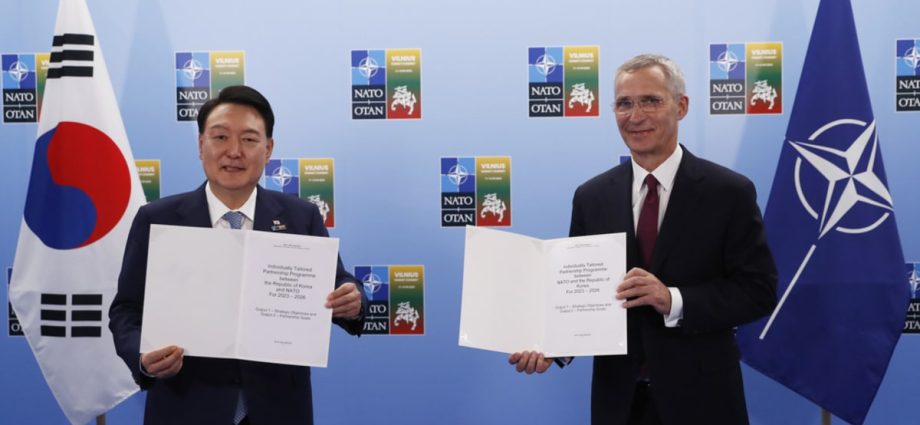
And from a defence standpoint, NATO and the four partners will aim to improve the “interoperability” of their militaries – the ability of different military forces and defence systems to effectively work together and coordinate their actions.
This might entail deepening the knowledge of each other’s military assets, improving the relationships between their soldiers and other military personnel, and expanding joint drills.
DEEPENING RELATIONS BETWEEN NATO AND INDO-PACIFIC PARTNERS
The intensifying and deepening relations between NATO and its Indo-Pacific partners can be interpreted in two ways.
First, these partnerships form another important link in the expanding network of diplomatic and security ties between the US, its Western allies and the Indo-Pacific region. They complement partnerships like AUKUS and the Quad.
Beyond this, we can also view these agreements in the context of NATO’s evolving outreach with the rest of the world over the past couple decades.
Previously, NATO’s collaborations with Indo-Pacific countries involved pooling resources for security operations in non-NATO members, such as the Balkans in the 1990s and Afghanistan in the 2000s.
Nowadays, strengthening these partnerships is seen as a vital part of responding to the new challenges and threats posed by Russia and China.
Of course, this does not mean we will see NATO military equipment or troops permanently stationed in the Indo-Pacific. Nor would it be realistic to expect the Indo-Pacific countries’ military contributions to Ukraine to lead to a more permanent set-up in Europe.

